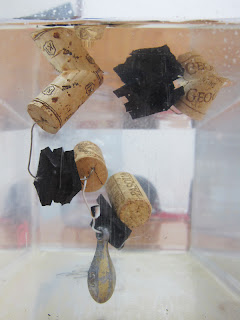After the success of the primary school Explorer program in January, in which over 1,100 students visited BIOS, it’s now the turn of the middle schools! First up were fifteen students hand picked from Clearwater Middle School, who visited the Institute on the 9th of March.
After a quick introduction that involved watching our two new videos, the Science of SCUBA and the Warwick, the BIOS Education Officer JP Skinner set the students to work, attempting to lift some sunken treasure from the sea floor!
Well… the ‘treasure’ may have been nothing more than an old fishing weight and the ‘sea floor’ a plastic aquarium but the experiment is the perfect way to teach someone Archimedes’ Principle (so that if they ever do find a hoard of gold bullion, they’ll know exactly how bring it to the surface!).
Archimedes, an ancient Greek scientist and perhaps one of the greatest mathematicians of all time discovered that:
“Any object, wholly or partially immersed in a fluid, is buoyed up by a force equal to the weight of the fluid displaced by the object.”
His principle actually takes into account several factors: the weight and density of the water, as well as the weight, density and surface area of the object, and explains how all manner of things float, such as seaweed, beach balls and cruise liners while others things sink with a trace, like pebbles, golf balls and cell phones!
It also gives an insight into how to resurface something that has already sunk – a liter of fresh water weighs a kilogram, so to bring to the surface something that weighs a kilo (such as our mythical gold bar), we would need to displace a liter of water (using an air filled lift bag, for instance). And that’s exactly what the Clearwater students worked out, albeit on a slightly smaller scale.
With our gold safely salvaged, it was time to cool off in the crystal clear waters of Whale Bone Bay, where the students saw baby squid, colorful nudibranchs and a school of anchovies so large, it took several minutes to swim past us!
We would like to congratulate everyone involved, especially those students to whom BIOS awarded scholarships for this year’s Waterstart program.












